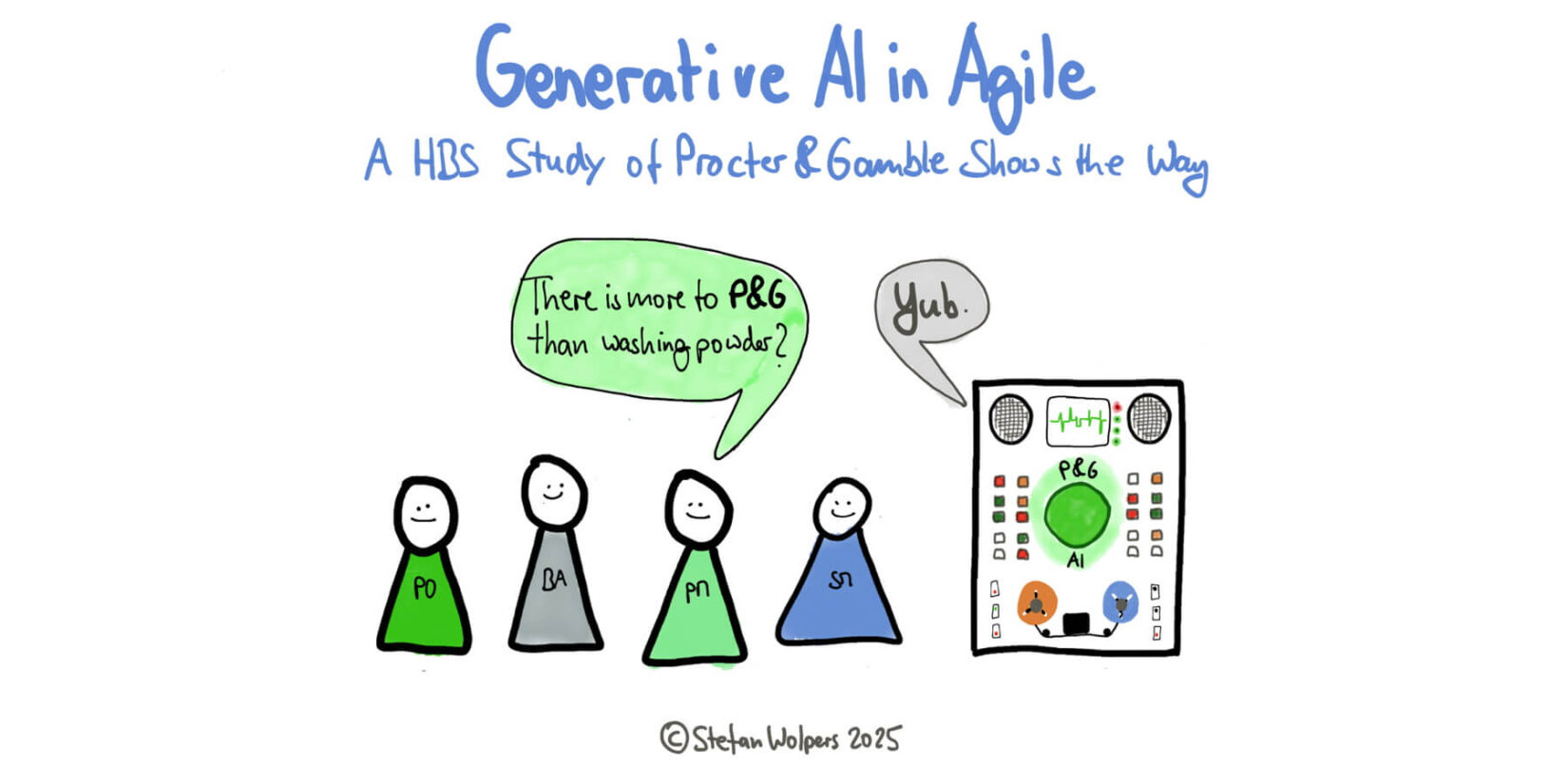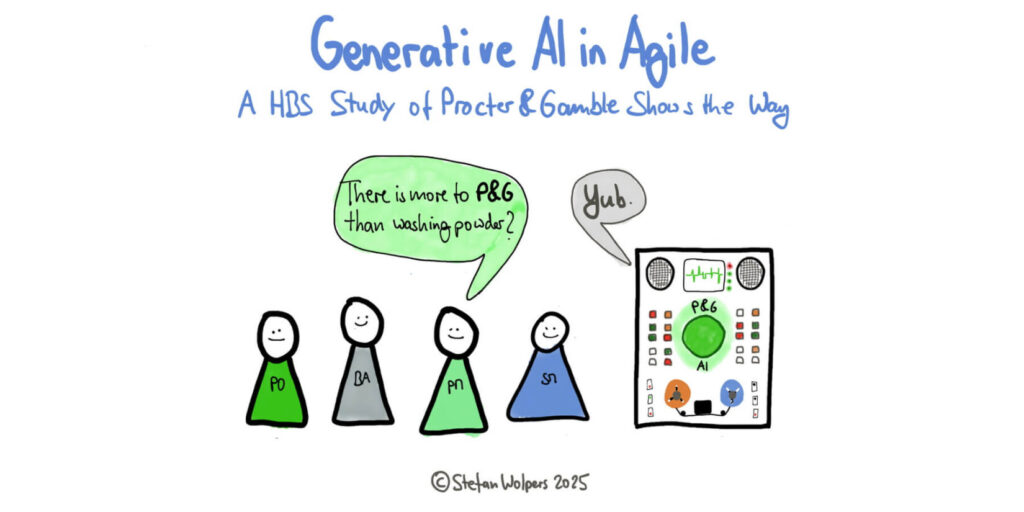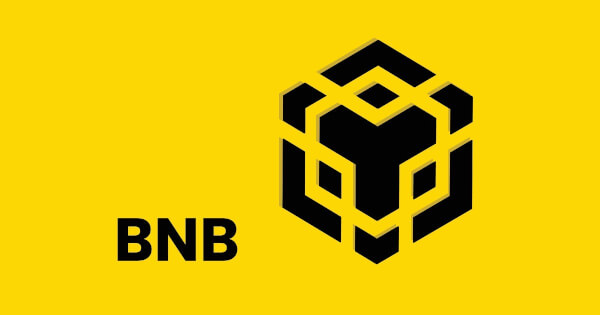TL;DR: A Harvard Study of Procter & Gamble Shows the Way
Recent research shows AI isn’t just another tool—it’s a “cybernetic teammate” that enhances agile work. A Harvard Business School study of 776 professionals found individuals using AI matched the performance of human teams, broke down expertise silos, and experienced more positive emotions during work. For agile practitioners, the choice isn’t between humans or AI but between being AI-augmented or falling behind those who are. The cost of experimentation is low; the potential career advantage, on the other side, is substantial. A reason to embrace generative AI in Agile?

🇩🇪 Zur deutschsprachigen Version des Artikels: Generative KI in Agile: Eine strategische Karriereentscheidung.
🗞 Shall I notify you about articles like this one? Awesome! You can sign up here for the ‘Food for Agile Thought’ newsletter and join 42,000-plus subscribers.
🛑 Becoming obsolete is a choice, not inevitable!
👉 Don’t Miss Out — the Last Pilot Cohort: AI for Agile Practitioners: Pilot Cohort #3, June 5 to July 3, 2025, at € 249!
Introduction: The AI Dilemma in the Agile Community
Interestingly, Agile practitioners are no strangers to skepticism about new tools. The Agile Manifesto’s emphasis on “individuals and interactions over processes and tools” has led some to dismiss generative AI (GenAI) as another buzzword that distracts from human-centric collaboration. Others fear it might worsen an already challenging job market. But what if avoiding AI is the riskier choice?
The job market concerns are multifaceted and reflect broader anxieties about AI’s impact on knowledge work. Many agile practitioners worry that AI could automate core aspects of their roles—from documentation and facilitation to coaching and analysis. In a profession already experiencing market fluctuations due to economic uncertainty and evolving organizational models, the prospect of AI-driven efficiency creates fear that fewer agile professionals will be needed. Some practitioners also believe that organizations might reduce investment in human agile talent or consolidate roles if AI can generate user stories, facilitate Retrospectives, or analyze team metrics. These concerns are particularly acute for practitioners who have positioned themselves primarily as process experts rather than as strategic business partners they are supposed to be. (Remember: We are not paid to practice [insert your agile framework of choice] but to solve our customers’ problems within the given constraints while contributing to the organization’s sustainability.)
Drawing parallels to the Y2K crisis—where preparation, not panic, averted disaster—adopting GenAI today represents a low-cost, high-upside strategy for agile professionals. Early adopters will thrive if AI becomes foundational to work (as the Internet did). If not, the cost of learning is negligible. The evidence, however, increasingly points toward AI’s transformative potential.
Rather than relying on theoretical arguments or anecdotal evidence alone, we can turn to rigorous research that directly examines AI’s impact on collaborative work. One particularly relevant study provides empirical insights into exactly how AI affects the kind of cross-functional collaboration at the heart of agile practice.
Cannot see the form? Please click here.
Generative AI in Agile Analysis: The Harvard Business School P&G Study
The 2025 Harvard Business School study “The Cybernetic Teammate” by Dell’Acqua et al. provides compelling evidence of AI’s impact on collaborative work. Conducted with 776 professionals at Procter & Gamble, this large-scale field experiment examined how AI transforms three core pillars of collaboration: performance, expertise sharing, and social engagement.
The study implemented a 2×2 experimental design where participants were randomly assigned to work either with or without AI, and either individually or in two-person teams on real product innovation challenges. This design allowed researchers to isolate AI’s specific effects on individual and team performance.
The results were striking. Individuals with AI matched teams’ performance without AI, suggesting that AI can effectively replicate certain benefits of human collaboration. Furthermore, AI broke down functional silos between R&D and Commercial professionals, with AI-augmented individuals producing more balanced solutions regardless of their professional background. Perhaps most surprisingly, the study found that AI’s language-based interface prompted more positive emotional responses among participants, suggesting it can fulfill part of the social and motivational role traditionally offered by human teammates.
These findings directly address the concerns of agile practitioners and provide empirical evidence that AI adoption can enhance rather than detract from the core values of agile work.
Debunking Myths: AI vs. Agile Values
Myth 1: “AI Undermines Agile’s Focus on Human Interaction”
This objection misunderstands both the agile principle and AI’s role. The principle doesn’t reject tools; it prioritizes human connections while acknowledging that appropriate tools enable better interactions. The Dell’Acqua study demonstrates that AI-enabled individuals matched the performance of human teams in innovation tasks. Crucially, AI didn’t replace collaboration—it enhanced it.
The P&G study also revealed that participants reported more positive emotions (excitement, energy) and fewer negative ones (anxiety, frustration) when using AI, mirroring the social benefits of teamwork. The researchers concluded that AI can “fulfill part of the social and motivational role traditionally offered by human teammates.” (Source: Abstract, page 2.) For agile practitioners, this suggests that AI automates administrative work while potentially enhancing the emotional experience of the work itself.
Myth 2: “AI Will Replace Agile Roles”
The more realistic concern isn’t replacement by AI itself, but competition from AI-augmented practitioners. The P&G study found that when some professionals leverage AI to accomplish in minutes what takes others hours, the performance differential becomes significant.
The research conclusively showed that AI doesn’t eliminate expertise—it redistributes it. In the P&G context, R&D professionals using AI proposed more commercially viable ideas, while Commercial professionals delivered solutions with greater technical depth. As the study authors noted, “AI breaks down functional silos” (Source: Abstract, page 2), allowing professionals to exceed their traditional domain boundaries.
For agile practitioners, this implies that AI won’t eliminate the need for facilitation, coaching, or product ownership—but it will transform how these roles operate, requiring practitioners to adapt their skills accordingly.
Myth 3: “Using AI Is ‘Cheating’”
This perspective assumes a static definition of human capability that never reflects reality. Knowledge workers have always integrated tools—from calculators to spreadsheets to project management software—to enhance their capabilities. The P&G study reinforces this view, showing that AI represents a continuation of this tradition, not a departure from it.
The Y2K Parallel: Preparing for Uncertainty
Like Y2K, no one knows if today’s AI hype will fizzle or redefine work. But consider:
- Cost of learning: Free and low-cost tools and 4-8 hours of practice can yield initial competence,
- Upside: Early adopters gain a significant career edge if AI becomes essential.
The P&G study provides concrete evidence of these benefits, showing that AI users completed tasks 12–16% faster while producing higher-quality results. As the researchers noted, “Individuals with AI produced solutions at a quality level comparable to two-person teams” (Source: 1. Introduction, page 4), demonstrating substantial productivity gains with relatively minimal learning investment.
Practical Applications for Generative AI in Agile Workflows
Here’s how agile practitioners can apply lessons from the P&G study to their workflows:
1. Enhancing Agile Events
Sprint Planning:
- Generate draft acceptance criteria for complex user stories
- Identify potential dependencies or risks in planned work
- Suggest task breakdowns for large epics
The P&G study found that “AI can enhance collaborative performance by automating certain tasks and broadening the range of expertise available to team members” (Source: 2. Related Literature, page 7). In Sprint Planning, this translates to faster generation of comprehensive acceptance criteria, which teams can then review, refine, and customize based on domain knowledge—improving thoroughness while reducing time spent by up to 70%. (Note: You can also repeat these benefits during refinement sessions.)
Retrospectives:
The study revealed that “GenAI’s ability to engage in natural language dialogue enables it to participate in the kind of open-ended, contextual interactions that characterize effective teamwork” (Source: 2. Related Literature, page 7). For Retrospectives, AI can analyze previous Retrospective notes to identify recurring patterns, generate discussion questions based on Sprint metrics, and suggest innovative formats tailored to specific team challenges.
2. Documentation and Communication
User Story Refinement:
The P&G research demonstrated that AI-assisted participants produced “substantially longer outputs”(Source: 5.1 Performance, page 15) in less time than control groups. For agile teams, this efficiency translates directly to user story refinement:
- Before: ‘Create a dashboard for the sales team.’
- After AI refinement: ‘As a sales director, I want a customizable dashboard showing region-specific sales metrics with trend visualization to quickly identify performance gaps and opportunities without manually compiling data. The dashboard should update in real-time, allow filtering by product line and period, and highlight variances against targets.’
Stakeholder Communications:
The study found that AI enables participants to “breach typical functional boundaries” (Source: 1. Introduction, page 4), allowing them to communicate more effectively across different domains of expertise. For agile practitioners, AI can help convert technical updates into business-focused language, generate executive summaries of Sprint outcomes, and create tailored communications for different stakeholder groups.
3. Conflict Resolution
The P&G experiment showed that “AI may also enhance collaborative team dynamics and transform the division of labor” (Source: 2. Related Literature, page 7). For conflict resolution, this suggests using AI to simulate stakeholder negotiations where it role-plays as a resistant Product Owner, helping facilitators practice persuasion techniques. This provides a safe environment for practitioners to hone their facilitation skills before high-stakes conversations. (Note: Try Grok to train arguing.)
4. Meeting Facilitation
Given the finding that “the adoption of AI also broadens the user’s reach in areas outside their core expertise” (Source: 1. Introduction, page 4), meeting facilitation becomes another area ripe for AI enhancement. Practitioners can use AI to generate structured agendas, provide real-time suggestions for redirecting off-track discussions, and create comprehensive summaries and action items from meeting notes.
Measurable Benefits of Generative AI in Agile
The P&G study quantified several benefits of AI-augmented agile practices that directly apply:
- Time Efficiency: The study found that AI-enabled participants completed tasks 12-16% faster than those without AI. For agile practitioners, this could translate to a 40-60% reduction in time spent on routine documentation.
- Quality Improvements: Individuals with AI showed a 0.37 standard deviation increase in quality over the control group, comparable to the quality improvement seen in two-person teams (0.24 standard deviation). This suggests a potential 35% increase in clarity and completeness for agile artifacts.
- Strategic Focus: The time saved allows practitioners to redirect 2-3 additional hours per week toward strategic activities and direct team support.
- Team Satisfaction: The study’s finding that “professionals reported more positive emotions and fewer negative emotions when engaging with AI” (Source: 1. Introduction, page 5) suggests that AI can reduce frustration with administrative tasks, potentially improving team health metrics.
Current Limitations and When Not to Use Generative AI in Agile
Despite its benefits, the P&G study acknowledges that AI has limitations. As the researchers note, “Our findings suggest that adopting AI in knowledge work involves more than simply adding another tool” (Source: 1. Introduction, page 5). For agile practitioners, understanding these limitations is crucial.
AI cannot replace:
- Building genuine human connections and psychological safety,
- Understanding team dynamics and interpersonal tensions,
- Making value judgments that require organizational context,
- Facilitating difficult conversations and conflict resolution.
The P&G experiment involved “one-day virtual collaborations that did not fully capture the day-to-day complexities of team interactions in organizations — such as extended coordination challenges and iterative rework cycles” (Source: 7. Discussion and Conclusion, page 20). Thus, agile practitioners should be aware of these limitations when implementing AI in ongoing team dynamics.
Warning Signs that you should revert to fully human approaches:
- When the AI’s suggestions lack the necessary organizational context,
- For highly sensitive situations involving personal conflicts,
- When the team needs emotional support rather than logical solutions,
- When building trust is the primary objective.
Generative AI in Agile: Enhancing Collaboration, Not Replacing It
The P&G study conclusively shows that AI enhances team collaboration rather than diminishing it. The researchers observed that AI served as a “boundary-spanning mechanism, helping professionals reason across traditional domain boundaries and approach problems more holistically” (Source: 7. Discussion and Conclusion, page 21).
For agile teams, this translates to several collaboration enhancements:
- Meeting Preparation: AI can help team members organize thoughts and contributions before meetings, leading to more productive discussions where everyone participates meaningfully.
- Knowledge Gap Bridging: The study found that “workers without deep product development experience can leverage AI’s suggestions to bridge gaps in knowledge or domain understanding” (Source: 1. Introduction, page 4). This allows less experienced team members to contribute more confidently in discussions.
- Idea Expansion: Dell’Acqua et al. observed that “individuals using AI achieved similar levels of solution balance on their own, effectively replicating the knowledge integration typically achieved through team collaboration” (Source: 7. Discussion and Conclusion, page 21). This helps teams break out of groupthink and consider a wider solution space.
- Documentation Burden Reduction: The study showed that AI-enabled participants produced significantly longer, more detailed outputs in less time. When one person volunteers to document decisions, AI can help them create comprehensive notes quickly, avoiding the common pattern where documentation responsibilities limit active participation.
Getting Started: Simple Steps
When using generative AI in Agile, start with simple steps:
- Experiment with Prompts: Use role-based framing (“Act as a Scrum Master…”) and constraints (“Propose solutions under a 2-week deadline”). The P&G study found that participants who interacted more extensively with AI through iterative prompting achieved better results.
- Focus on Repetitive Tasks: Automate standup summaries, reports, or OKR tracking. The research shows that AI provides the greatest benefits for routine, structured tasks where domain expertise can be clearly communicated.
- Iterate: The study demonstrated that treating AI as a collaborative partner rather than a mere tool yielded superior results. Approach AI like a junior teammate—critique its outputs, refine prompts, and integrate feedback.
Common Pitfalls to Avoid
When using generative AI in Agile, avoid the following anti-patterns:
- Excessive Secrecy: The P&G researchers found that transparency about AI usage was important for team dynamics. Being secretive can create distrust; be appropriately transparent.
- Over-reliance: The study noted that AI sometimes produced hallucinations, highlighting the need to maintain critical thinking and not accept AI outputs without verification.
- Tool Fixation: Dell’Acqua et al. emphasized focusing on outcomes rather than becoming obsessed with the tools themselves.
- Ignoring Team Dynamics: Consider how AI adoption affects team interactions and relationships, a concern highlighted by the researchers when discussing the social implications of AI integration.
Conclusion: Evolve Agility, Don’t Betray It
The P&G study provides compelling evidence that AI acts as a “cybernetic teammate”—augmenting human skills, not replacing them. As Dell’Acqua et al. conclude, “By enhancing performance, bridging functional expertise, and reshaping collaboration patterns, GenAI prompts a rethinking of how organizations structure teams and individual roles” (Source: 1. Introduction, page 5).
Agile’s strength lies in adaptability, and dismissing AI contradicts that principle. By embracing AI now, practitioners future-proof their careers while staying true to Agile’s core mission: delivering value faster, together.
The cost of waiting is your competitive edge. Start small, experiment often, and let AI handle the mundane—so you can focus on the meaningful. The most agile approach to AI isn’t blind enthusiasm or stubborn resistance—it’s thoughtful exploration, validated learning, and continuous adaptation based on results. This approach has guided agile practitioners through previous technological shifts and will serve you well in navigating this one.
Have you started embracing AI for your daily work? Please share with us in the comments.
Generative AI in Agile — Recommended Reading
The Agile Prompt Engineering Framework
AI in Agile Product Teams: Insights from Deep Research and What It Means for Your Practice
Is Vibe Coding Agile or Merely a Hype?
60 ChatGPT Prompts Plus Prompt Engineering Guide for Scrum Practitioners
👆 Stefan Wolpers: The Scrum Anti-Patterns Guide (Amazon advertisement.)
🛑 Becoming obsolete is a choice, not inevitable!
👉 Don’t Miss Out — the Last Pilot Cohort: AI for Agile Practitioners: Pilot Cohort #3, June 5 to July 3, 2025, at € 249!
📅 Scrum Training Classes, Workshops, and Events
Learn more about the Lean Tech Manifesto with our Scrum training classes, workshops, and events. You can secure your seat directly by following the corresponding link in the table below:
See all upcoming classes here.
You can book your seat for the training directly by following the corresponding links to the ticket shop. If the procurement process of your organization requires a different purchasing process, please contact Berlin Product People GmbH directly.
✋ Do Not Miss Out and Learn more about Generative AI in Agile — Join the 20,000-plus Strong ‘Hands-on Agile’ Slack Community
I invite you to join the “Hands-on Agile” Slack Community and enjoy the benefits of a fast-growing, vibrant community of agile practitioners from around the world.
If you would like to join all you have to do now is provide your credentials via this Google form, and I will sign you up. By the way, it’s free.
Prepare yourself for Generative AI in Agile by studying the free Scrum Anti-Patterns Guide:
The post Generative AI in Agile: A Strategic Career Decision appeared first on Age-of-Product.com.










